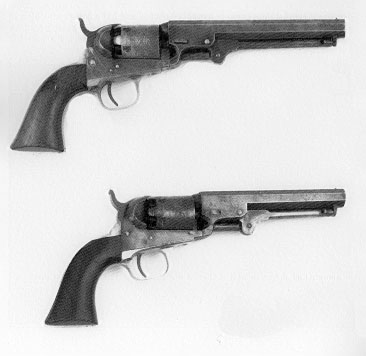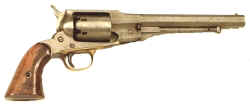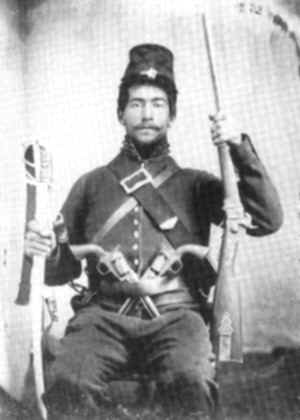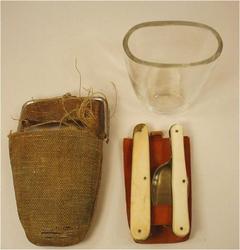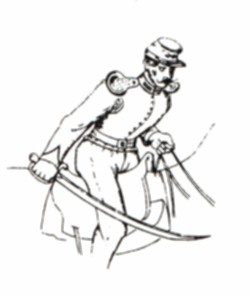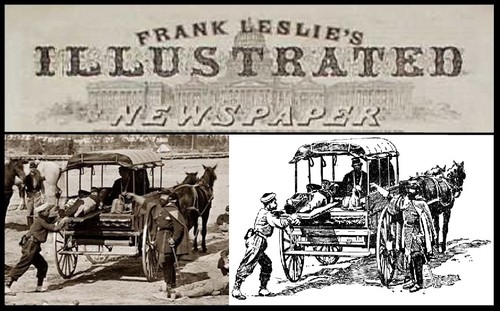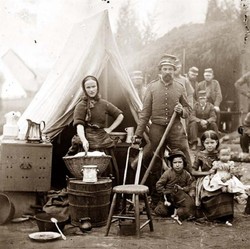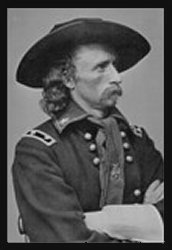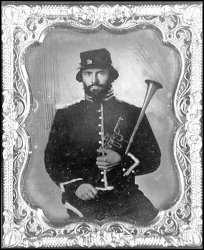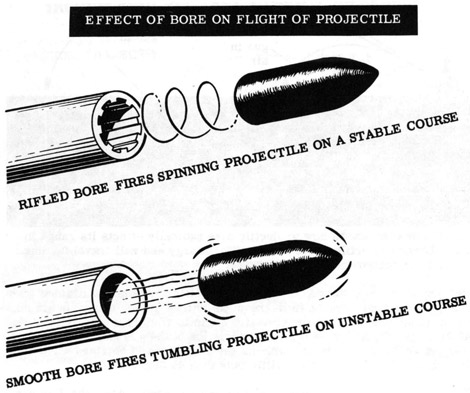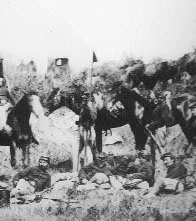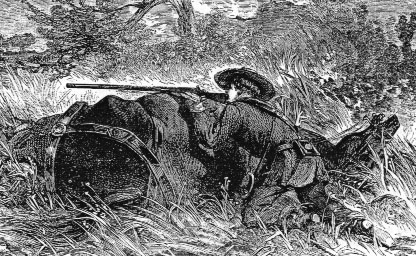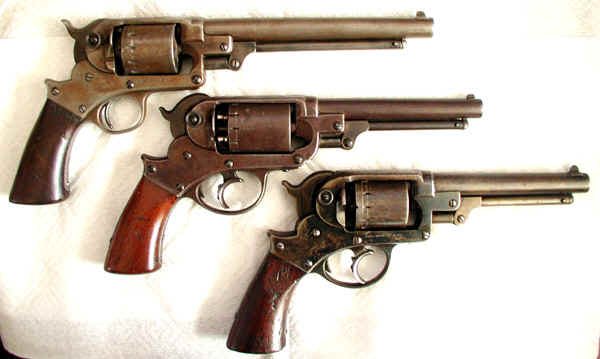Accoutrements, and Tack


|
The equipment carried by the mounted arm was utterly efficient and sufficiently |
||
|
Colt Pistols of the type carried by many Cavalrymen: Usually of .36 or .45 caliber. These are 1849 models with octagonal barrels. Later models had rounded barrels. The Colt design was copied by many manufacturers. |
A well-turned-out officer and mount. The horse seems to be fitted with a regulation breastplate and Curb bit with a single rein.Note the pistol holsters mounted across the saddle, the saber, and the officer's stripe on the dark troussers. Enlisted men (and many officers) worn sky blue, wool kersey troussers with NO stripe. |
Patent drawing for the loading mechanism of the Billinghurst-Requa Volley gun. |
|
The Remington cap and ball .45 caliber revolver became more popular as the war progressed. The frame completely surrounded the cylinder meaning it could be changed without removing the barrel. |
"Armed to the teeth!" This trooper has a saber, a Sharps carbine, and two Colt-style pistols. Note the leather carbine sling in its normal color-- black. |
Portable Eating Kit: Knife, Fork, Spoon, Drinking Glass |
|
The length of the typical cavalry saber is emphasized in this picture. This man is wearing a kepi, a popular cap fashioned after a French style, a short cavalry jacket, leather shoes and gauntlets [gloves]. His long wool troussers were double thickness on the inside of the leg. |
An instructive illustration from a cavalry drill manual showing the proper use of the saber when "running down" infantry on horseback. |
This clearly shows how photos were made into engravings of the newspapers |
|
The heavy cavalry "wrist breaker" with its metal sabard. |
In terms of sword-play this image speaks for itself. Please note the carbine sling [here shown in white] with its pistol cartridge box (rarely seen in practice), the blanket roll and horse accoutrements. |
A wife and children visiting the camp in DC |
|
The broad-brimmed hat [worn here by George Custer] was very popular with troops in the western theater. He wears the insignia of a Major General [two stars]. |
A musician of the cavalry corps. Note his cavalry jacket with its collar tapes, brass epaulettes, and chevrons. The instrument is a form of trumpet. |
The difference in ballistics for a rifle and a smoothbore |
|
The short muzzel-loading cavalry musketoon: a common variety used by the Confederacy. It usually came in .52. caliber, but many .58 caliber long arms were cut down to this size. |
The Sharps Cavalry Carbine. One of the best cavalry arms of the war. This .52 caliber paper cartridge weapon had a dropping breech-block that allowed it to be loaded from the rear. This eliminated the need to ram down the load and made its use on horseback more convenient and faster. |
Hardtack: Flour, water, salt, baked dry. Enough said! |
|
The 6th PA Cavalry was initially issued lances, seen stacked in the center of the photo. In sharp contrast to the role played by cavalry during the Napoleonic era, when a well-timed cavalry charge could exploit an infantry breakthrough, the firepower available to Civil War infantry made such a tactic heroically foolhardy. |
The lances (see the trooper in the center) were quite long -- 2.7 meters, or nine feet -- and they could be effective in the hands of a large number of trained cavalrymen in the confines of a European battlefield. But for a single regiment they were simply not functional. They were replaced in 1863 with carbines, swords, and pistols. |
|
|
Cavalrymen looked neither as good as the man on the left nor as poor as the one on the right. |
This man has taken cover behind a dead artillery horse. Note the harness. |
|
|
Three Models of the Starr double action Revolver (.44, .36, & .44 Caliber) Invented by Ebenezer Starr in 1858. Just pull the trigger -- no need to cock the hammer. |
The awe inspiring fighting knife in this picture was not an issue item. |
|
|
The 1859 model McClellen Saddle on a well-turned-out mount. |
This trooper is wearing a cavalry style (Short Cape) Great Coat. These sky blue coats were warm and comfortable. Many were captured from the Federals. |
|

